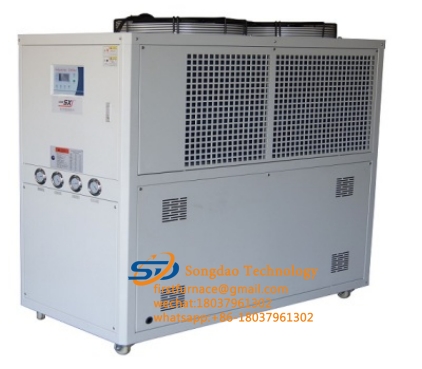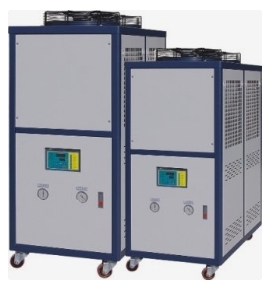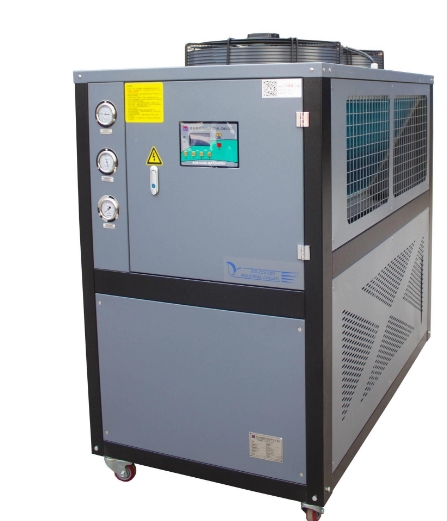- 02
- Dec
Installation and matching of chiller expansion valve
Installation and matching of chiller expansion valve
1. Matching
According to the resistance loss of R, Q0, t0, tk, liquid pipeline and valve parts, the steps are:
Determine the pressure difference between the two ends of the expansion valve;
Determine the form of the valve;
Select the model and specification of the valve.
1. Determine the pressure difference between the two ends of the valve:
ΔP=PK-ΣΔPi-Po(KPa)
In the formula: PK――condensing pressure, KPa, ΣΔPi――is ΔP1+ΔP2+ΔP3+ΔP4 (ΔP1 is the resistance loss of the liquid pipe; ΔP2 is the resistance loss of the elbow, valve, etc.; ΔP3 is the rise of the liquid pipe Pressure loss, ΔP3=ρɡh; ΔP4 is the resistance loss of the dispensing head and the dispensing capillary, usually 0.5bar each); Po—evaporating pressure, KPa.
2. Determine the form of the valve:
The choice of internal balance or external balance depends on the pressure drop in the evaporator. For the R22 system, when the pressure drop exceeds the corresponding evaporation temperature by 1°C, an externally balanced thermal expansion valve should be used.

3. Select the model and specification of the valve:
According to Q0 and the calculated ΔP before and after the expansion valve and the evaporation temperature t0, check the valve model and valve capacity from the relevant table. In order to simplify the matching procedures, it can also be carried out according to the design technical measures. The model and specifications of the existing thermal expansion valve must be based on the type of refrigerant used in the refrigeration system, the range of evaporating temperature and the size of the heat load of the evaporator. The selection should meet the following requirements:
(1) The capacity of the selected thermal expansion valve is 20-30% larger than the actual thermal load of the evaporator;
(2) For refrigeration systems that do not have a cooling water volume control valve or the cooling water temperature is low in winter, when selecting a thermal expansion valve, the capacity of the valve should be 70-80% larger than the evaporator load, but the maximum should not exceed 2 of the evaporator heat load. Times;
(3) When selecting a thermal expansion valve, the pressure drop of the liquid supply pipeline should be calculated to obtain the pressure difference before and after the valve, and then the specification of the thermal expansion valve should be determined according to the expansion valve calculation capacity table provided by the manufacturer.

Two, installation
1. Check whether it is in good condition before installation, especially the part of the temperature sensing mechanism;
2. The installation location must be close to the evaporator, and the valve body should be installed vertically, not inclined or upside down;
3. When installing, pay attention to keeping the liquid in the temperature sensing mechanism in the temperature sensing bag at all times, so the temperature sensing bag should be installed lower than the valve body;
4. The temperature sensor should be installed on the horizontal return pipe of the outlet of the evaporator as much as possible, and it should generally be more than 1.5m away from the suction port of the compressor;
5. The temperature sensing bag must not be placed on the pipeline with effusion;
6. If the outlet of the evaporator has a gas-liquid exchanger, the temperature sensing package is generally at the outlet of the evaporator, that is, before the heat exchanger;
7. The temperature sensing bulb is usually placed on the return pipe of the evaporator and wrapped tightly against the wall of the pipe. The contact area should be cleaned of oxide scale, exposing the metal color;
8. When the diameter of the return air pipe is less than 25mm, the temperature sensing bag can be tied to the top of the return air pipe; when the diameter is greater than 25mm, it can be tied at 45° of the lower side of the return air pipe to prevent factors such as oil accumulation at the bottom of the pipe from affecting the feeling. The correct sense of the temperature bulb.

Three, debugging
1. Set a thermometer at the outlet of the evaporator or use the suction pressure to check the degree of superheat;
2. The degree of superheat is too small (liquid supply is too large), and the adjusting rod rotates half a turn or one turn clockwise (that is, increasing the spring force and reducing the valve opening), when the refrigerant flow decreases; the adjusting rod thread rotates once The number of turns should not be too many (the adjusting rod thread rotates one turn, the superheat will change about 1-2℃), after many adjustments, until the requirements are met;
3. Empirical adjustment method: Turn the screw of the adjusting rod to change the opening of the valve, so that frost or dew can form just outside the return pipe of the evaporator. For the refrigeration device with the evaporation temperature below 0 degrees, if you touch it with your hands after frosting, you will have a cold feeling of sticking your hands. At this time, the opening degree is suitable; for the evaporation temperature above 0 degrees, the condensation can be considered Situation judgment.
